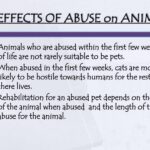The vast landscapes of Australia, a country renowned for its stunning natural beauty and diverse wildlife, conceal a darker reality beneath their picturesque façade. While many Australians possess a heartfelt affinity for their furry companions and feathered friends, animal cruelty is an insidious problem that lurks in various spheres of society. This article endeavors to shed light on the myriad arenas where animal cruelty manifests, often escaping the scrutiny of the average citizen.
The most glaring instance of animal cruelty can be found within the intensive farming industry. Many consumers may relish the thought of consuming free-range eggs or grass-fed beef, yet a significant portion of the animal products sold in supermarkets originates from intensive farming operations. These facilities prioritize profit maximization over the welfare of the animals under their care. Here, chickens are crammed together in confined spaces, unable to engage in natural behaviors, their beaks often trimmed to prevent pecking-induced injuries. Similarly, pigs are kept in gestation crates so small that they cannot turn around. This confinement leads to an array of physical and psychological ailments, an abhorrent violation of the animals’ innate desires for space and autonomy.
Furthermore, the marine industry presents another sector rife with cruelty. Commercial fishing practices, including trawling and longlining, inflict severe suffering not only on targeted species but also on countless non-target marine creatures. Bycatch, the unintentional capture of unintended species, leads to the suffering and death of numerous innocent animals. Turtles, dolphins, and seabirds become entangled in nets, floundering in their attempts to escape, often drowning in the process. It is a grim reality that these practices are driven by insatiable demand for seafood, where profit eclipses ethical considerations.
Beyond the confines of industrial operations, the practice of live animal export is another troubling facet of Australia’s animal cruelty landscape. Every year, millions of sheep and cattle are shipped to overseas markets, often enduring harrowing journeys in cramped, unsanitary conditions. Reports of animals suffering from heat stress, dehydration, and injury have sparked outrage among animal welfare advocates. The psychological toll is just as significant—many animals enter a state of profound distress, exacerbated by the chaos of their environment. This malady of mistreatment necessitates a critical examination of the ethics surrounding live exports, as economic advantage should never eclipse the well-being of sentient beings.
Additionally, hidden from plain sight are the instances of domestic animal abuse. Pet neglect and cruelty can occur behind closed doors, manifesting in numerous forms—abandonment, physical abuse, inadequate nutrition, or lack of medical care. While some may dismiss such occurrences as isolated incidents, the frequency with which they arise reveals a broader societal issue. Often, perpetrators of domestic animal cruelty possess a history of violence or instability, hinting that understanding the broader societal context may shed light on these devastating behaviors. Public awareness and intervention programs are essential in combatting these deep-rooted issues, providing support not only for the animals but also for the humans involved.
The fate of wildlife in Australia also hangs precariously in the balance. With the continued encroachment of urbanization and industrial activities, natural habitats are being relentlessly destroyed. Roadkill is an all-too-frequent occurrence, with countless native marsupials, reptiles, and birds meeting their untimely fates on Australian roads. Furthermore, land clearing and habitat destruction have led to significant population declines of various species. This not only affects animal welfare directly but also disrupts ecological systems, resulting in a cascading effect that poses risks to both flora and fauna. Through a lack of regard for the intrinsic value of all living beings, human activities are orchestrating an unprecedented extinction crisis.
The insidious nature of animal cruelty is often compounded by a lack of understanding and empathy within the general populace. Many individuals remain blissfully ignorant of the sheer extent of suffering endured by animals in various sectors, attributing the availability of products to a disconnect from their origins. Education and advocacy play integral roles in bridging this gap, fostering a culture of compassion and respect toward all sentient beings. Initiatives that promote transparency in animal husbandry practices can empower consumers to make informed choices about the products they purchase and consume.
To combat the rampant tide of cruelty towards animals in Australia, a multifaceted approach is necessary. Legislative reforms must be at the forefront, ensuring that laws related to animal welfare are stringent and adequately enforced. Current penalties for animal cruelty often fail to deter offenders, necessitating more robust measures to safeguard vulnerable animals. Alongside legal reforms, grassroots movements and organizations dedicated to advocating for animal rights are critical in rallying public support and creating a societal shift towards compassion.
In conclusion, the issue of animal cruelty in Australia permeates various facets of society—intensive farming, commercial fishing, live exports, domestic abuse, and wildlife exploitation. By shining a light on these hidden realities, it becomes possible to foster a culture of awareness and compassion. As citizens grow more cognizant of the challenges faced by animals, they may be spurred to take action, galvanizing change toward a more equitable existence for all living beings. It is imperative that we engage in open dialogues about animal welfare, pushing for a future in which the ethical treatment of animals becomes a shared societal value rather than an exception to the rule.







